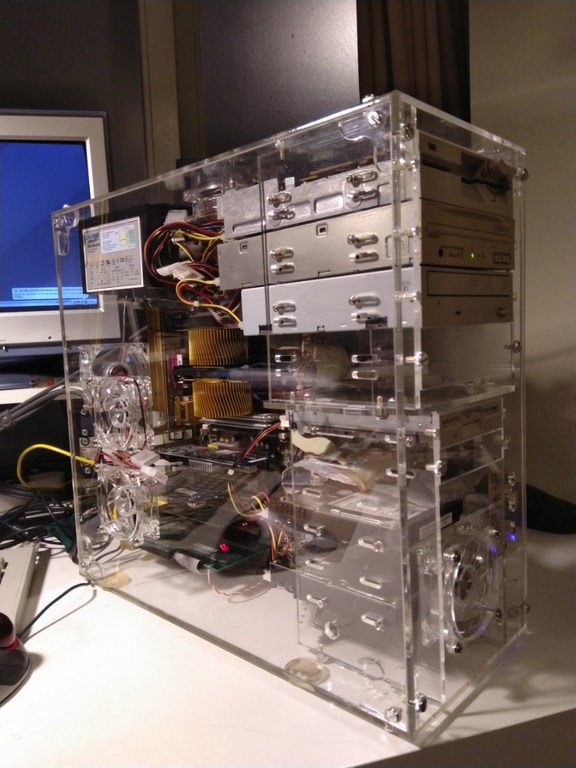martin_boro wrote on 2020-06-30, 20:34:
There is very little in terms of a performance increase with dual socket boards. Although, you probably go and fiddle with the CPU affinity, but the improvements will still be marginal at best.
Performance increase in a (single-threaded) game will be marginal to zero. The first - and for a long time only -SMP-capable game was Quake 3 Arena, and even that would run better on an AthlonXP or P4 than on any dual P3. However responsiveness in desktop/multitasking situations is massively improved. OS boots significantly faster too (assuming your I/O isn't a huge period-correct bottleneck). I still remember getting my first dual system running, an Asus P2B-DS, with 2x P2-400. This was around 2002 and my main system was an AthlonXP of some description (1800+ Tbred B iirc). There was no doubt the AthlonXP was vastly faster in any game - but just for running a desktop, the dual P2-400 was more responsive.
The real reason why people (or at least myself) build with dual socket boards, is simply 2 > 1.
And that is pretty much it. […]
Show full quote
The real reason why people (or at least myself) build with dual socket boards, is simply 2 > 1.
And that is pretty much it.
It's the same with RAM. Can I have a Dual 1GHz P3 with 8GB of SDRAM? The manual to a Tyan Thunder 2500 says so.
Will it be worth the hassle, money, necessity of using PAE, or the likely performance decrease? Absolutely, because it's a Dual 1GHz P3 with 8GB of SDRAM.
For some people, hardware > software.
Hell yeah. But there's also software > games. Consider that most games were still firmly single-threaded when dual core CPUs became mainstream (~2004). Still they came to dominate the market well before games caught up. That wasn't just marketing and showoff-factor. A system with a dual-core CPU simply is much nicer to work on - and that applied to older CPUs as well. Also, if you compiled kernels, or anything else for that matter, or ran Photoshop or other heavy duty applications, you really did use the cores/CPUs.
The thing is, what retro gamers do is not the same as what people back then did on their systems. For retro gamers wanting to run Windows 98 or DOS on fast systems that in the day would never have seen anything older than XP (and that only because Vista sucked), it's completely pointless as they don't use the extra cores/CPUs. But when building a period-correct system, with a period-correct SMP-aware OS, you can at the very least feel the difference before you start up that game.
I'm currently tinkering with a dual P3-933 system with 1GB of RDRAM. I received it with Windows XP installed, which is probably objectively the best Windows OS to run on it. However for nostalgia's sake I'm going to downgrade to Windows 2000. That system is a beast with an U160 SCSI controller and 10k rpm Quantum Atlas V drive. The drive removes I/O bottleneck, which helps the CPUs boot the OS faster than I've ever seen, even on systems with three times the clock speed.
Will this system play games better than my single-CPU P3-1400S system? Nope. But there's more to life than just games 😀
SETBLASTER wrote on 2020-06-30, 21:08:
yea i guess its nice to build a retro pc with side panel window and show a dual cpu retro machine. Something strange to see and that is not common.
you just need to find 2 good looking and matching heatsinks haha
Like this you mean?

😜
